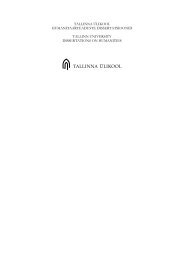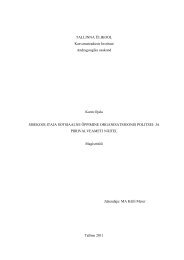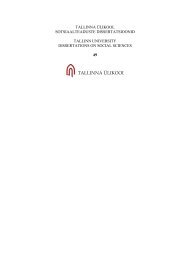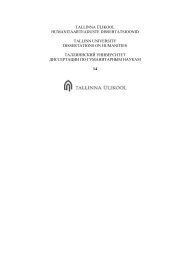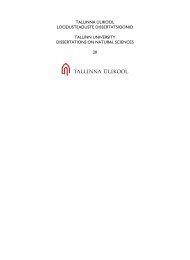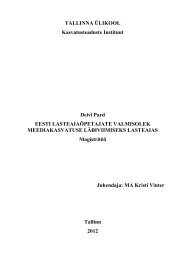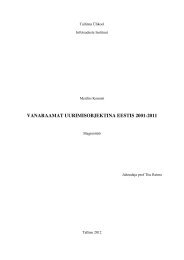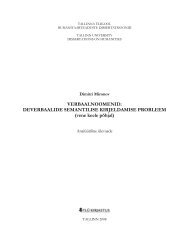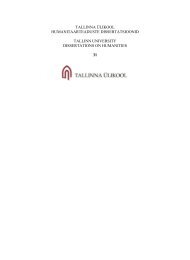Download (1157Kb) - E-Ait
Download (1157Kb) - E-Ait
Download (1157Kb) - E-Ait
You also want an ePaper? Increase the reach of your titles
YUMPU automatically turns print PDFs into web optimized ePapers that Google loves.
4.2. The incentives used by Tanzania public university libraries.<br />
Having discussed how knowledge is shared and the advantages and disadvantages pertaining<br />
to the way knowledge is shared, this section seeks to explore what incentives Tanzania public<br />
university libraries have in place to facilitate knowledge sharing. It will start by presenting a<br />
table showing the summary of the incentives suggested by the respondents from these<br />
libraries. See table below.<br />
Incentives for knowledge sharing<br />
Score per University (out of 21). 21 Questionnaires out of 24<br />
Type of<br />
0UT<br />
OF<br />
SCORES<br />
IN<br />
incentive MUCCOBS MU OUT UDOM UDSM SUA TOTAL 21 %<br />
1. Recognition 1 1 2 2 6 21 29%<br />
2. promotion 1 2 2 3 8 21 38%<br />
Financial<br />
21 10%<br />
3. benefit 1 1 2<br />
4. None 4 2 1 1 2 10 21 48%<br />
5. Any other - - - - - - - 21 0%<br />
Fig 2. Table showing incentives for knowledge sharing<br />
Knowledge sharing is well promoted by recognition of individual contributions toward<br />
knowledge sharing. Organisational structures should strive to incorporate reward systems as a<br />
way to encourage staff to share their knowledge. However reconciling different reward and<br />
recognition approaches across the organisation can pose serious challenges. As the above<br />
table suggests, different opinions exist as to how knowledge sharing is rewarded in Tanzania<br />
public university libraries. What is evident is that the scores for the non existence of<br />
compensation system is high compared to any reward suggested. Recognition also scored<br />
more highly than promotion and financial benefits. However the maximum percentage scores<br />
suggested by rewarding and non rewarding system is only 48% for no existence of rewarding<br />
system, see figure below for the percentage distributions of incentives.<br />
45



